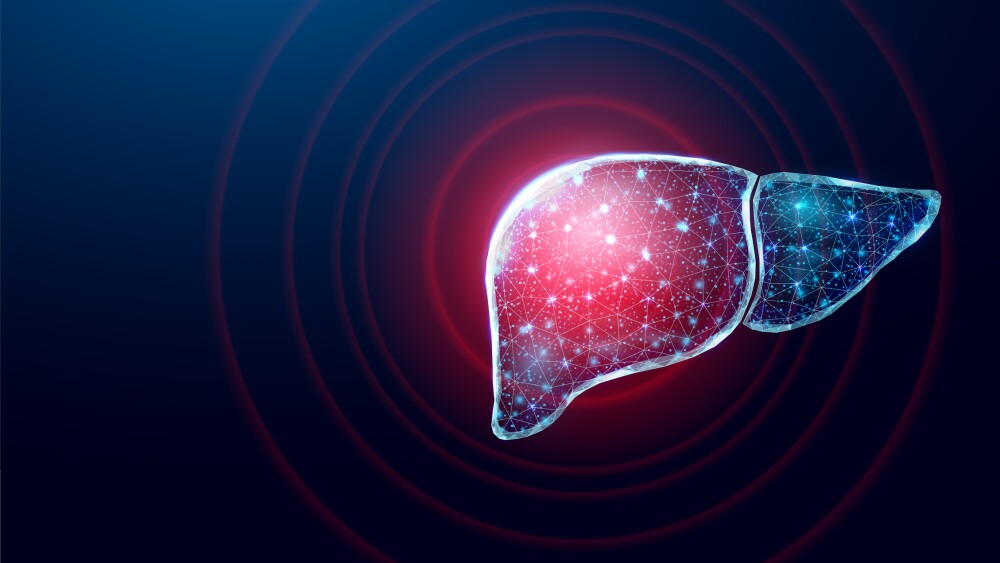Two out of the first five patients dosed with IFX-1 achieved complete remission Dose escalation warranted by pharmacodynamic analysis and approved by relevant authorities for a total enrollment of 18 patients in 3 dose cohorts InflaRx to present initial data at the SVB Leerink Global Healthcare Conference today at 9:00 am EST (3:00 pm CET). JENA, Germany, Feb. 26, 2020 (GLOBE NEWSWIRE) -- InflaRx N.V. (Nasdaq: IFRX), a clinical-stage biopharmaceutical company developing anti-inflammatory t
- Two out of the first five patients dosed with IFX-1 achieved complete remission
- Dose escalation warranted by pharmacodynamic analysis and approved by relevant authorities for a total enrollment of 18 patients in 3 dose cohorts
- InflaRx to present initial data at the SVB Leerink Global Healthcare Conference today at 9:00 am EST (3:00 pm CET).
JENA, Germany, Feb. 26, 2020 (GLOBE NEWSWIRE) -- InflaRx N.V. (Nasdaq: IFRX), a clinical-stage biopharmaceutical company developing anti-inflammatory therapeutics by targeting the complement system, announces positive initial data from the first 5 patients in the Phase IIa open label study with IFX-1 in patients suffering from Pyoderma Gangraenosum (PG).
PG is a rare and debilitating neutrophil-driven, autoinflammatory skin disease, characterized by an acute, destructive ulcerating process of the skin, primarily occurring on the legs but also other regions of the body. The exact prevalence of PG is not yet known, but it is estimated that up to 50,000 patients in the US and Europe are affected by this disease. There are currently no FDA approved therapies for the treatment of PG.
The ongoing Phase IIa open label, proof-of-concept study has thus far enrolled 5 patients with PG under primary investigator Dr. Afsaneh Alavi, Assistant Prof. of Dermatology, University of Toronto. “These are the first reported data investigating complement inhibition in Pyoderma Gangraenosum, and they provide encouraging early evidence that inhibiting C5a may provide treatment benefit for these tremendously suffering patients,” Dr. Alavi explained. “A complete healing response in 2 out of 5 patients who failed to respond to standard of care therapy can be interpreted as drug activity of IFX-1 since placebo responses in previous PG trials are known to be low,” she added.
Patients in this first dosing group are being treated with 800mg of IFX-1 biweekly for 12 weeks after an initial run-in phase with three doses of 800mg on day 1, 4 and 8 of the study, with a three-month observational period. The main objectives of the study are the evaluation of the safety and efficacy of IFX-1 in patients with PG. Efficacy is being evaluated by a responder rate defined as Physician Global Assessment ≤3 of the target ulcer at various timepoints and time to complete closure (remission) of the target ulcer. Out of the first 5 initial patients dosed with IFX-1, 2 patients achieved complete closure of the target ulcer. One patient completed the treatment period demonstrating a full healing of the disease, including all other affected areas. This patient continues to remain disease free approximately 2 months after being taken off IFX-1 therapy. The second patient had almost complete healing of all other PG affected areas except for one minimal opening. This patient is close to completion of therapy. Both patients in remission had previously failed to respond to different therapeutic treatment attempts, including high dose glucocorticoids, and both patients showed elevated C5a levels in plasma at baseline. An additional patient who completed the study showed initial wound healing activity in the first 2-3 weeks of treatment, but no wound size decrease or closure was detected. The remaining 2 patients who are still under treatment have severe disease, including very large and extensive ulcers. Both patients did not show a healing response but are eligible for a dose escalation. Pharmacodynamic analysis of the C5a levels over time of treatment indicated that a dose escalation may provide better control over C5a levels throughout the treatment period.
The drug was well tolerated and no drug-related severe adverse events (SAE) have been recorded to date in the study.
“These are encouraging first signs of drug activity for IFX-1 in PG, and we are eager to investigate the approved dose escalation in additional patients as we are enlarging the current study,” commented Prof. Niels C. Riedemann, CEO and Founder of InflaRx.
The Phase IIa open label study will continue to enroll patients with two approved additional dose escalation schemes in a sequential manner. The targeted patient number for enrollment is expected to be 18.
About IFX-1:
IFX-1 is a first-in-class monoclonal anti-human complement factor C5a antibody, which highly and effectively blocks the biological activity of C5a and demonstrates high selectivity towards its target in human blood. Thus, IFX-1 leaves the formation of the membrane attack complex (C5b-9) intact as an important defense mechanism, which is not the case for molecules blocking the cleavage of C5. IFX-1 has been demonstrated to control the inflammatory response driven tissue and organ damage by specifically blocking C5a as a key “amplifier” of this response in pre-clinical studies. IFX-1 is believed to be the first monoclonal anti-C5a antibody introduced into clinical development. Approximately 300 people have been treated with IFX-1 in clinical trials, and the antibody has been shown to be well tolerated. IFX-1 is currently being developed for various inflammatory indications, including Hidradenitis Suppurativa, ANCA-associated vasculitis and Pyoderma Gangraenosum.
About Pyoderma Gangraenosum (PG):
PG is a rare ulcerative skin disorder that can lead to chronic painful and difficult to treat wounds. It occurs in people in their 40s and 50s. Many PG patients also suffer from other autoimmune disorders, including inflammatory bowel diseases like ulcerative colitis, arthritides like rheumatoid arthritis, and hematological diseases such as multiple myeloma.
Patients suffer from severe pain, long healing times, and frequent relapses. There are no FDA approved drugs currently approved for the treatment of PG. Current treatment options include the use of systemic immunosuppression in rapidly progressing cases.
C5a is a key factor for neutrophil tissue infiltration and neutrophil activation, which are believed to play a key amplifying role in PG. Thus, C5a inhibition may be able to prevent neutrophil infiltration and activation in PG patients. Given the detected activity of C5a inhibition by IFX-1 in another neutrophil-driven skin disorder, Hidradenitis Suppurativa, InflaRx is currently conducting a Phase IIa clinical study to investigate a potential benefit of IFX-1 for patients suffering from PG. This study is currently recruiting patients.
About InflaRx N.V.:
InflaRx (Nasdaq: IFRX) is a clinical-stage biopharmaceutical company focused on applying its proprietary anti-C5a technology to discover and develop first-in-class, potent and specific inhibitors of C5a. Complement C5a is a powerful inflammatory mediator involved in the progression of a wide variety of autoimmune and other inflammatory diseases. InflaRx was founded in 2007, and the group has offices and subsidiaries in Jena and Munich, Germany, as well as Ann Arbor, MI, USA. For further information please visit www.inflarx.com.
Contacts:
InflaRx N.V.
Jordan Zwick – Global Head of Business Development & Corporate Strategy
Email: jordan.zwick[at]inflarx.de
Tel: +1 585-329-5807
MC Services AG
Katja Arnold, Laurie Doyle, Andreas Jungfer
Email: inflarx[at]mc-services.eu
Europe: +49 89-210 2280
US: +1-339-832-0752
FORWARD-LOOKING STATEMENTS
This press release contains forward-looking statements. All statements other than statements of historical fact are forward-looking statements, which are often indicated by terms such as “may,” “will,” “should,” “expect,” “plan,” “anticipate,” “could,” “intend,” “target,” “project,” “estimate,” “believe,” “estimate,” “predict,” “potential” or “continue” and similar expressions. Forward-looking statements appear in a number of places throughout this release and may include statements regarding our intentions, beliefs, projections, outlook, analyses and current expectations concerning, among other things, our ongoing and planned preclinical development and clinical trials, the timing of and our ability to make regulatory filings and obtain and maintain regulatory approvals for our product candidates, our intellectual property position, our ability to develop commercial functions, expectations regarding clinical trial data, our results of operations, cash needs, financial condition, liquidity, prospects, future transactions, growth and strategies, the industry in which we operate, the trends that may affect the industry or us and the risks uncertainties and other factors described under the heading “Risk Factors” in InflaRx’s periodic filings with the Securities and Exchange Commission. These statements speak only as of the date of this press release and involve known and unknown risks, uncertainties and other important factors that may cause our actual results, performance or achievements to be materially different from any future results, performance or achievements expressed or implied by the forward-looking statements. Given these risks, uncertainties and other factors, you should not place undue reliance on these forward-looking statements, and we assume no obligation to update these forward-looking statements, even if new information becomes available in the future, except as required by law.




